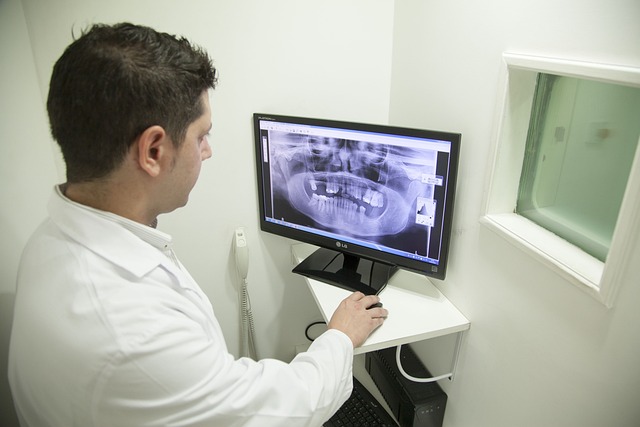In times of medical emergencies, hospitals play a crucial role in saving lives and providing urgent care. The layout and design of a hospital's emergency department significantly impact its ability to respond effectively and efficiently to emergencies. A well-planned emergency layout can streamline patient flow, optimize staff response times, and ultimately improve patient outcomes. This article explores the key considerations and best practices in designing a hospital emergency layout.
Patient Triage and Reception Area
The emergency department's layout should prioritize a designated triage and reception area, allowing medical personnel to quickly assess and prioritize patients based on the severity of their condition. The triage area should be easily accessible from the entrance and equipped with essential equipment for initial patient evaluation. This space should have clear signage and well-trained staff to guide patients to the appropriate areas for further assessment and treatment.
Clear Pathways and Zones
Efficient patient flow is crucial in emergency situations. Hospital emergency layouts should incorporate clear pathways and separate zones to prevent congestion and confusion. The layout should include separate spaces for waiting, treatment, diagnostic procedures, and observation. Each area should be clearly marked, easily identifiable, and designed to accommodate patients and medical equipment. By creating distinct zones, the layout can facilitate a logical progression of care, minimizing delays and ensuring smooth transitions between stages of treatment.
Flexible Treatment Areas
Emergency departments must be designed to accommodate the unpredictable and dynamic nature of emergencies. Flexibility is key to adapting the space to different patient volumes and diverse medical needs. The layout should include adaptable treatment areas that can be easily expanded or contracted as required. These areas should be equipped with essential medical supplies, diagnostic tools, and technology to support prompt and efficient care delivery.
Integration of Critical Services
To provide comprehensive emergency care, the layout should integrate essential services within the emergency department. Radiology services, laboratory facilities, and pharmacies should be located in close proximity to expedite diagnostic testing and the dispensing of medications. Collaboration between different departments is crucial, as it enables seamless communication and minimizes delays in patient care. Close proximity between the emergency department and operating theaters, intensive care units, and other critical care areas is also essential for timely interventions.
Efficient Staff Workflow
A well-designed emergency layout should consider the workflow and communication needs of the medical staff. Clear sightlines and unobstructed pathways allow staff members to navigate the department quickly. The layout should include centrally located workstations or nursing stations that provide visibility and oversight of patient areas. Additionally, the integration of advanced communication systems, such as mobile devices or pagers, can enhance staff coordination and response times.
Incorporating Technology
Modern healthcare facilities rely heavily on technology to streamline processes and enhance patient care. The emergency layout should accommodate the integration of technology systems, such as electronic health records, computerized physician order entry, and patient tracking systems. These technologies can improve the accuracy and accessibility of patient information, promote efficient documentation, and support timely decision-making.
Emergency Equipment Guide
In moments of crisis and medical emergencies, hospitals serve as crucial sanctuaries for individuals seeking urgent care. Behind the scenes, a diverse array of specialized equipment stands ready to support healthcare professionals in their mission to save lives and provide critical care. This article explores the essential emergency equipment found in hospitals, highlighting their significance in ensuring effective and efficient emergency response.
Defibrillators:
Defibrillators are vital pieces of equipment used to restore normal heart rhythms in cases of cardiac arrest. They deliver electric shocks to the heart, helping to correct irregular rhythms and potentially saving lives. Automated External Defibrillators (AEDs) are commonly found in public spaces, allowing non-medical personnel to provide immediate assistance until professional help arrives.
Ventilators:
Ventilators are essential for patients who experience respiratory distress or are unable to breathe on their own. These life-supporting machines provide a controlled flow of oxygen into the lungs and remove carbon dioxide from the body. Advanced ventilators can be adjusted to meet the specific needs of each patient, ensuring optimal support during critical moments.
Infusion Pumps:
Infusion pumps are used to deliver fluids, medications, and nutrients directly into a patient's bloodstream. These devices ensure precise and controlled administration, enabling healthcare professionals to provide essential treatments, such as intravenous medications, blood transfusions, or parenteral nutrition. Infusion pumps play a critical role in maintaining fluid balance and delivering life-saving medications in emergency situations.
Cardiac Monitors:
Cardiac monitors enable continuous monitoring of a patient's heart rate, rhythm, and blood pressure. These devices provide real-time data to healthcare providers, allowing them to identify and respond quickly to changes in a patient's cardiovascular status. Cardiac monitors are invaluable in emergency departments and intensive care units, aiding in the diagnosis and management of critical cardiac conditions.
Portable X-ray Machines:
Portable X-ray machines are indispensable in emergency scenarios, allowing medical professionals to obtain on-the-spot imaging without the need to move critically ill or injured patients. These mobile units enable rapid assessment of fractures, dislocations, and internal injuries, facilitating timely decision-making and appropriate treatment.
Electrocardiogram (ECG) Machines:
ECG machines record the electrical activity of the heart, providing valuable information about heart rate, rhythm, and possible cardiac abnormalities. These devices are used extensively in emergency departments to aid in the diagnosis and monitoring of heart conditions, such as heart attacks, arrhythmias, and ischemia.
Suction Units:
Suction units are employed to remove fluids, mucus, and other debris from a patient's airway, enabling clear breathing and preventing potential complications. They are particularly crucial during emergencies when patients may require rapid airway clearance, such as in cases of choking, excessive secretions, or airway obstruction.
Crash Carts:
Crash carts are portable trolleys stocked with a variety of emergency medications, supplies, and equipment. They are strategically placed throughout hospitals and are readily accessible during critical situations. Crash carts typically include medications for cardiac arrest, respiratory distress, and allergic reactions, as well as equipment like defibrillators, airway devices, and emergency drugs.






0 Comments